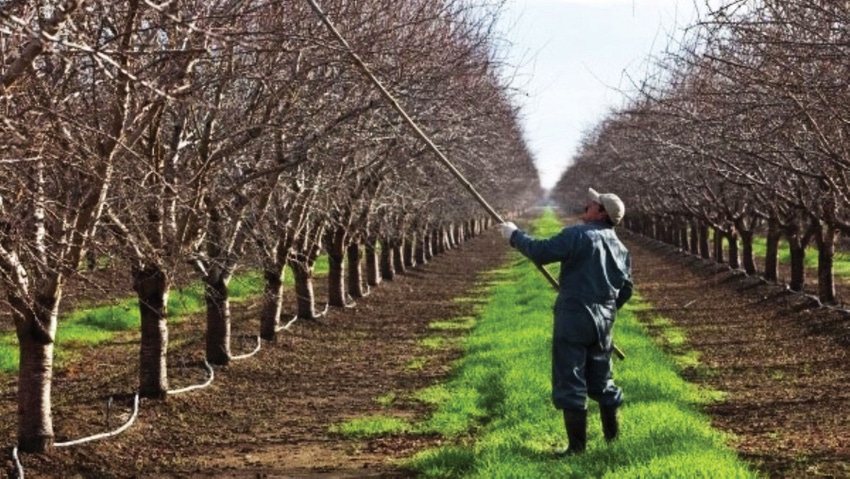
It was only weeks ago that the California Association of Pest Control Advisers met in an annual conference to discuss pending problems and solutions with a focus on agricultural technology.
They may already have what could be the first of future tree nut pest problems of concern to the nearly 4,000 California EPA-licensed pest control advisers providing management consultation for food production.
The issue involves a beetle that is frequently mistaken for a dried fruit beetle -- but is responsible for greater damage than its fellow genus companion.
Currently identified as Carpophilus truncatus, it initially lays its eggs on field nuts. “The larvae dig entry tunnels and burrow into the nut causing pinhole-type damage,” said Bob Klein, manager of the California Pistachio Research Board.
With increasing reports of growers seeing a growing number of pinholes in pistachios, Klein told his audience that other than the navel orangeworm, no other pest was known to burrow into pistachios and almonds in similar fashion as this beetle.
In his “Managing Pests and Diseases in Pistachios: Current Technology and Works in Progress” presentation, Klein traced the pistachio/almond/walnut pest from Australia a decade ago to Italy by 2019 into California this year, showing up in pistachios in Kings County and almonds in Madera County.
“A number of control approaches have been tried using attractants and pesticides, but nothing promising has yet been achieved,” he noted.
A Science of the Total Environment bulletin last month was prescient in noting, “Climate change with its earlier onset and rapid completion of insect lifecycle will increase pest pressure on high value agriculture in California.” The research authors cited almonds, walnuts, and pistachios as targets of the increased pest activity, a reference corroborated by the government’s National Center for Biotechnology Information reporting, “Agricultural crops and their corresponding pests are direction and indirectly affected by climate change.”
Temperatures a factor
That report cited temperature as the most important environmental factor affecting insect behavior, distribution, development, and reproduction. “Climate change creates new ecological niches that provide opportunities for insect pests to establish and spread in new geographic regions and farmers can expect to face new and intense pest problems in the coming years due to the changing climate.”
Houston Wilson, an IPM specialist at Kearney Ag Center, is leading the University of California efforts involving the new discovery made in September, and says: “The pest has been recovered from both almonds and pistachios. So far, there are official finds in four counties --- Kings, Stanislaus, Merced, and Madera --- and we are surveying the rest of the San Joaquin Valley.”
Wilson says, “In the span of a couple of weeks, we suddenly had two discoveries in two different crops in two different counties. We initiated a regional pest survey and have been working with growers, farm and pest control advisors over several counties. We’re getting a lot of beetle samples from throughout San Joaquin Valley.”
“The damage in this area has been seen for several years, but that destruction may have been confused as coming from another insect,” adds entomologist and Stanislaus County IPM advisor Jhalendra Rijal.
To which Wilson says: “The earliest samples were collected in 2022 in Merced County, so it’s been here for at least a year and we’re seeing it from Stanislaus to Kinds County. That’s a pretty good stretch north-to-south, so our sense is that it’s widespread and has been here for some time.”
Because this year was somewhat unprecedented in the combination of forces that lead to poor orchard sanitation, “We’re seeing historical levels of navel orangeworm damage, one of the worst years in memory involving NOW infestation, and now this beetle shows up. Because it’s so widespread, a quarantine is too late and we’re living with its arrival. The key message now is sanitation, sanitation, sanitation. Navel orangeworm has already kicked growers in the butt and a new pest has arrived. Fundamental to controlling both is effective crop sanitation.”
About the Author(s)
You May Also Like




